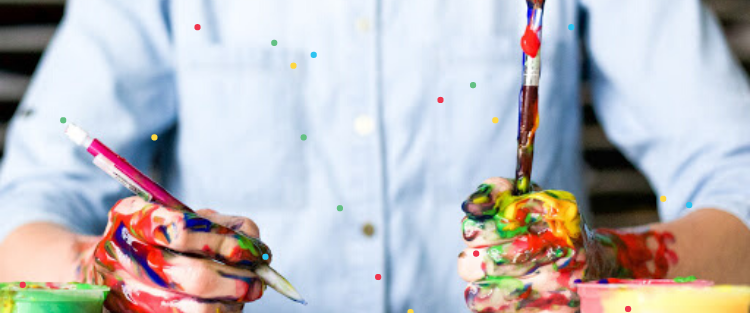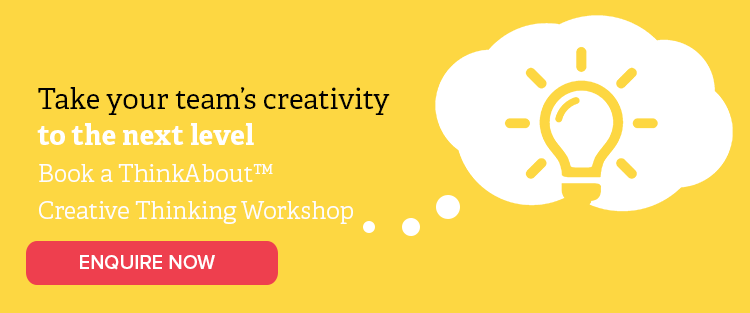Creativity isn’t a trait exclusively reserved for advertising agencies, graphic designers or cutting-edge startups. It’s something that all teams, regardless of industry, size or make-up, should be actively cultivating.
It can be easy for businesses, and the employees in these businesses, to lose that creative spark. Whether it’s a maturing business drowned by bureaucracy, top-down policies and procedures stifling staff freedom, or indifferent employees tirelessly watching the clock until 5pm, creativity in the workplace can be hard to come by.
But creativity is critical, and a culture that encourages and celebrates creative thinking and creative problem solving will reap the benefits of a more engaged and productive workforce.
Why is creativity in the workplace important?
The first and most obvious benefit of creativity in the workplace is that it fuels innovation. Giving your employees the space to be creative in their thinking and in their problem-solving leads to unique ideas. It could be a new product or service, a better way of doing something, an untapped marketing opportunity, or a new solution to an old problem.
But creativity isn’t a nice-to-have, it’s a necessity. The truth is, if you’re not fostering a team of creative thinkers, you risk being left behind in a constantly changing business environment. If you’re unable to be creative, to adapt and innovate, your business could struggle to survive in the face of new competitors, new products, new technologies and new demands.
The offshoot of all this creativity is that employees who are free to flex their creative muscle at work are happier, more engaged, more productive, and more loyal.
How to foster creativity in your workplace
Building a diverse team
There’s no better way to drive creativity in your business than employing people with diverse backgrounds. Having people from similar backgrounds, with similar life experiences, and similar perspectives and opinions will only stifle your business’s ability to come up with new and exciting ideas, or find creative solutions to complex problems. If everyone in the room thinks the same way, and sees the world through the same lens, they’re likely to come up with the same ideas.
Establishing a diverse team creates balance so you can look at situations from multiple perspectives. We call this diversity of thought. To achieve diversity of thought in the workplace, you need to build a team of people who think differently.
According to the Whole Brain® framework, thinking styles fall into four categories, represented as four quadrants of the Whole Brain® Model – relational, analytical, practical and experimental. People with different thinking styles have different strengths and weaknesses. By building a team that represents different thinkers, your business can leverage the strengths and perspectives of a diverse thinking team, leading to stronger ideas, more effective collaboration and better outcomes.
Get people collaborating
On the topic of diversity, a diverse team is only a benefit to your business if it’s able to collaborate effectively. Great ideas can come from anywhere – that’s why diversity matters. But really amazing ideas come from sharing and collaborating, so that all sides of a problem are considered.
The Whole Brain® framework is a great tool for encouraging effective communication, collaboration and teamwork. Whole Brain® thinking gives us the tools to recognise how our teammates prefer to think, communicate and work. It helps us bridge the divide between different thinking styles. Diverse teams can struggle with conflict, but Whole Brain® thinking allows us to understand each other better, leading to more cohesive, collaborative teams that work together to solve problems in the most creative way.
Let employees take risks (and fail)
Businesses can get very uncomfortable with the idea of failure. But there are two sides to a coin, and failure is an essential element of success. Astro Teller, Director at Google’s “moonshot” R&D division, called X, prides himself on building a culture where employees embrace failure. The X division is focused on finding solutions to some of the world’s toughest problems, so building a creative culture where employees are motivated to experiment, to take risks, to fail, is critical.
One such activity is the “bad idea brainstorm”, where employees are encouraged to voice anything that comes to mind, no matter how bizarre. Understandably, a lot of the ideas aren’t viable. But some, like the idea for the driverless car, are revolutionary.
Yes, failure feels bad. But failure also helps us learn and grow, and it builds resilience. Employees must feel comfortable taking risks if they’re ever going to succeed. If they’re so afraid of failure that they’re not even willing to try, your business will never discover a new way of doing something that’s never been done before.
How to create this kind of culture? One method is empowering your employees to make their own mistakes, giving them the freedom to take risks and make mistakes. One way to encourage this is to lead by example. As a leader, you set the tone. If you’re open and honest with your staff about your own mistakes, your own shortcomings, the fact that you don’t have all the answers, it inspires others around you to be okay with failure.
Learn how to be an agile thinker
Agile thinking refers to the ability to switch between our thinking styles when the situation calls for it. It encourages creativity by giving employees the skills they need to be flexible in their thinking, allowing them to see problems from multiple angles, or use different thinking approaches to solve problems. It’s a key skill in today’s ever-changing business environment, and one that can be developed using Whole Brain® thinking.
Empower your team and don’t micromanage
There’s no space for creativity if you’re dictating to your employees how to work. Give your staff some space to figure things out on their own, to use their own judgement, experience and opinions to come up with ideas that perhaps you’d never thought of.
You need to trust that your employees are capable. Be supportive, but don’t stand in their way. This is the essence of inclusive leadership, the ability to empower your employees and leverage their different thinking strengths. Having a better understanding of your employees’ thinking styles can improve your leadership approach. Knowing how your employees like to work, and how they like to approach problems, means you can take a step back and let them ride that creative brain wave.
How to build a culture of creativity to take your business to the next level
Whole Brain® Thinking and the HBDI® can help you and your team build skills for more creative problem-solving and more cohesive collaboration, allowing you to leverage all the different thinking styles for the best possible outcome. If you’re ready to take your business to the next level, enquire about our ThinkAbout Creative Thinking group learning program.


